How to Format a Hard Drive and Install Windows XP
Step by step on how to use the Windows XP installation CD to delete existing hard drive partitions, format partitions, and install Windows XP.
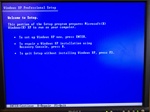
Welcome to Setup - Windows XP
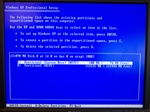
To delete the selected partition, press D.
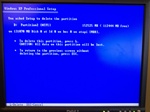
To delete this partition, press L.
CAUTION: All data on this partition will be lost.
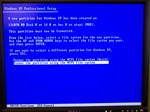
Format the partition using the NTFS file system.
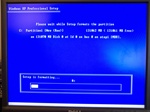
Setup is formatting the partition.
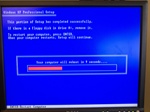
When setup has completed successfully, your computer will reboot.
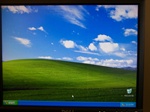
Windows XP successfully installed.
In the following step by step, I will take you through the process of deleting existing hard drive partitions, formating and installing Windows XP on a hard drive using the Windows XP installation CD. Note: If you have any data/applications or drivers on your current hard-drive that you want to keep, make sure you back it up to CDs/DVDs or an external hard-drive before continuing, because this process will DELETE everything from the hard-drive.
Note VERY IMPORTANT: Before you do anything... If your computer uses an ethernet card and/or wifi card to connect to the internet, make sure you have the computers ethernet card drivers or wifi drivers backed up on CD or a flash drive, so that you can install the drivers after you've finished re-installing Windows XP. Otherwise, you may not be able to get your computer to connect to the internet once Windows XP is installed. I ran into this problem, but luckily the Dell computer that I was re-installing Windows XP on, came with a "Drivers and Utilities" CD that had my computer's Intel Ethernet card driver on it.
So once you're ready, here's how to go about formating and installing Windows XP using the Windows XP installation CD:
- Insert your Windows XP installation disc into your CD-rom drive.
- Turn on your computer and let it boot up until you see a message on the screen that says "Press any key to boot from CD..." and at that point you want to press a key on the keyboard to boot from the Windows XP installation disc. (Note: if you don't see this message, you may need to change your computer's boot sequence to automatically boot first from the CD-rom drive, on a Dell computer, when the computer first starts up press F12 key and then change the boot sequence to start the DVD or CD-Rom drive first).
- You should now see a blue screen at the start of the Windows XP Setup. On the setup page you'll see three options, but since we are setting up Windows XP you will want "To set up Windows XP now, press ENTER".
- Now press the F8 button on your keyboard to agree to the licensing agreement.
- You will now get to a screen where you can delete old partitions on your hard drive and format the drive. The box in the lower half of the screen shows you all of your drives and the partitions that exist on them. If the only thing you see in the box is "Unpartitioned space" then you can skip this step. Otherwise, if you see "C: Partition1" or "D: Partition2" in the bottom box then use the Up and Down arrow keys to highlight your "C:" partition and press the 'D' key to start the deletion process of the partition. On the next screen press the ENTER key to delete this partition, then on the next screen press the 'L' key to finalize deleting the partition. (Just remember: All data on this partition will be lost). Continue you this step until you deleted all the partitions on your hard drive.
- You should now be back on the screen where you can set up Windows XP, create a partition, and delete a partition. The box in the lower half of the screen should now simply have an entry saying "Unpartitioned space xxxxxxMB." Make sure this is selected and then press the 'C' key to create a partition on the drive. The next screen will tell you the minimum and maximum sizes that a partition can be and will let you pick the size that you want this partition. The default size should be the maximum, but you may want to double check that the number entered is the maximum and hit 'ENTER' on the keyboard.
- Now you will be taken back to the set up Windows XP screen. But you should now see in the lower box a partition that looks something similiar to "C: Partition1 [New (Raw)] xxxxxxMB." Highlight this entry and then press 'ENTER' on the keboard.
- At the next screen you will be able to choose which file system to use to format the drive with. You will want to select NTFS as it is faster and more secure than FAT32. If the hard drive that you are formating is brand new and has not been used before, than go ahead and select the option that ends in "(Quick)". Otherwise, it's recommended that you select "Format the partition using the NTFS file system". Use the arrow UP and Down keys to make your selection and press' ENTER'.
- Setup will now begin formating the partition on your hard drive. Then it will copy files to the Windows installation folders. Once completed, your computer will automatically reboot.
- Once you computer restarts, Windows XP will automatically begin: Collecting information -> Dynamic Update -> Preparing installation -> Installing Windows -> Finalizing installation. This installation step will typically take around 30 minutes to complete depending on how fast your computer is.
- During installation, your computer will shut down and restart a couple times while Windows XP is being loaded.
- After installation successfully completes and your computer is connected to the internet, I would highly recommend you do a Windows Update to get all the latest security updates and Service Packs for Windows XP.
Hopefully, your new installation of Windows XP is running faster than ever before!